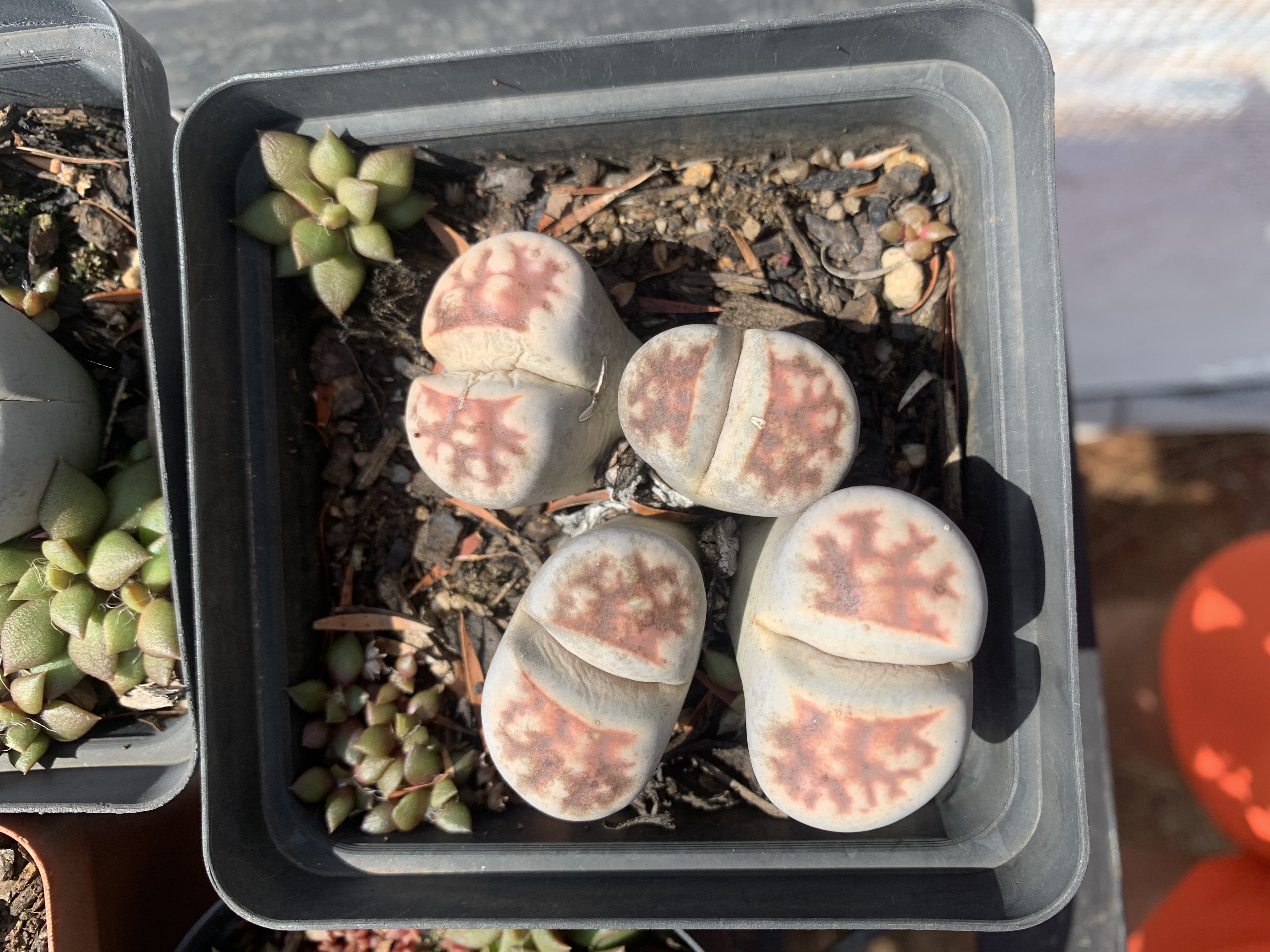
Lithops sp.
R30.00
Out of stock
Common names: Lithops, Living Stones
Family: Aizoaceae
Lithops is a genus of small, stemless succulents native to southern Africa, particularly Namibia and South Africa. These plants are famed for their remarkable camouflage, resembling small stones or pebbles to avoid herbivory in their harsh, arid environments.
Origin and Habitat
Lithops species grow in dry, rocky regions with minimal rainfall, often blending seamlessly into the gravelly soil. Their native habitat features intense sunlight, sparse vegetation, and extreme temperature fluctuations between day and night. Lithops are adapted to survive long droughts and nutrient-poor conditions.
Plant Description
Lithops are compact, forming pairs of thick, fleshy leaves that are fused together, creating a cleft at the center from which flowers emerge. Leaf coloration varies widely among species and cultivars, ranging from pale grey to greenish, brown, or reddish tones, often patterned with intricate markings that mimic surrounding stones. In autumn, daisy-like flowers—typically white or yellow—bloom from the center cleft and open in the afternoon. The plant’s low profile and stone-like appearance make it almost invisible in its natural surroundings.
Care Instructions
Light
Lithops require bright light with several hours of direct sun daily. Indoors, a south-facing window or a grow light can provide the intense illumination they need. Outdoors, they thrive in full sun but benefit from some protection from scorching midday heat.
Watering
Water very sparingly, especially during dormancy periods in summer and winter. Typically, watering is done only when the plant is actively growing, allowing the soil to dry completely between waterings. Overwatering leads quickly to root rot.
Soil
Use a very well-draining, gritty soil mix suitable for cacti and succulents.
Temperature
Lithops prefer warm conditions, ideally between 20°C and 30°C, but can tolerate cooler temperatures down to about 5°C if kept dry. They should be protected from frost.
Additional Information
Lithops propagate slowly, mostly by seed or division of clumps. They have a unique growth cycle where old leaves shrivel as new leaves develop inside the cleft. This succulent is a favorite among collectors due to its unusual appearance and low-maintenance needs. Its mimicry strategy offers a fascinating example of plant adaptation to extreme desert environments.
Plants
Explore our rare cycads, clivias, and succulents.
Shop
Garden
© 2025. All rights reserved.
(WhatsApp)
